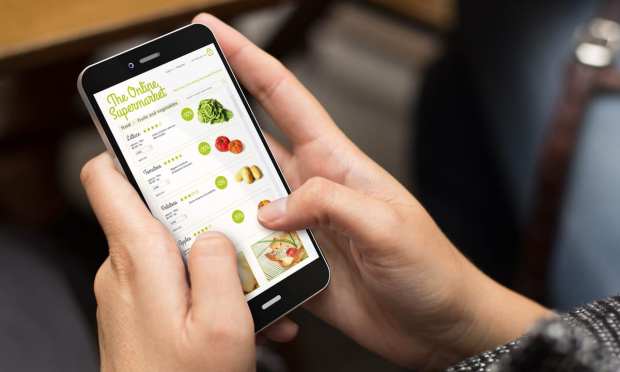Millennials Lead Grocery’s Digital Shift

While almost all consumers rely on grocery shopping to meet their daily or weekly needs, grocery buying behavior can vary enormously across demographics. After all, you can imagine that the needs of a 32-year-old Imperfect Foods subscriber living in New York City look very different from those of a 76-year-old Aldi shopper in Cedar Rapids. Now, as the pandemic has forced many consumers to completely change their grocery shopping behaviors, adopting new services and discovering new businesses, new fissures are emerging across demographics.
During the past 13 months, demand for online grocery has surged. PYMNTS’ Omnichannel Grocery Report, created in partnership with ACI Worldwide, found that, during the pandemic, 64 percent of consumers are purchasing at least some of their groceries online, while one in five consumers is doing their grocery shopping exclusively online. Noting this demand, investors have been pouring funds into digital grocery startups at home and abroad, leading to even more options for today’s online grocery shopper.
Of course, granted that 36 percent of consumers remain digital holdouts, shopping exclusively in physical stores, the gulf between the most online grocery shoppers and their brick-and-mortar counterparts is only widening. PYMNTS research finds that millennials are the consumers most likely to have increased their online grocery shopping behavior, with 4 in 10 millennials having shifted to ordering groceries online to be delivered, compared to 29 percent of Generation Z consumers, 34 percent of bridge millennials, 25 percent of Generation X members and 16 percent of baby boomers and seniors.
Additionally, the same survey found that 78 percent of consumers who have shifted to buying groceries online during the pandemic expect to maintain some or all of this behavior once COVID-19 is no longer a top-of-mind concern.
As Karen Webster noted in a recent story on the future of grocery, “A consumer with a newfound appreciation of her time, and whose work-from-home experience is likely to soon become a hybrid-work-from-home experience, is a consumer who is very happy to outsource both ordering and logistics to the platforms that make it easy and efficient to get grocery essentials.”
As these ultra-online millennials return to public spaces, as a plurality of millennials (43 percent) say they will do once the vaccine rollout is complete and as 41 percent say they will do when cases decrease, eGrocers will have to work hard to maintain and grow their share of millennial spending. The Omnichannel Grocery Report found that 33 percent of millennials shop at online retailers, compared to a whopping 78 percent who shop at Walmart and 59 percent who shop at other large national chains.
Online grocers will need to offer the sorts of convenient and price-conscious services that millennials seek out, such as buy now, pay later (BNPL); voice ordering; bargains and deals; a wide range of international offerings; personalized consumer journeys; easy-to-use mobile apps; and a focus on the basics and staples, given millennials’ relatively low interest in acquiring more products. Additionally, given that 66 percent of millennials report that they are living paycheck to pay check, and only 14 percent report having “more than enough earnings to cover all [their] bills,” eGrocers that can take advantage of emerging solutions to fix the “broken” economics of grocery delivery and offer prices comparable to brick-and-mortar stores will have the advantage going forward. After all, given that millennials range from ages 24 to 40, securing these consumers’ loyalty can lead to decades and decades of spending to come.

